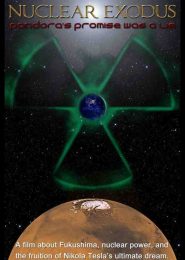The Dome (2017)
In the remote expanse of the Marshall Islands lies a tiny coral speck called Runit. This far-flung outpost is Ground Zero of the South Pacific, but it’s not a place of celebration or pride. Instead, it stands as a haunting testament to a colossal American blunder. The focal point of Runit is the enigmatic Dome, a structure that appears otherworldly, as if crafted by extraterrestrial hands. Yet, this is no alien creation; it’s a man-made, sprawling concrete circle that encases a chilling secret: tons of nuclear waste, including approximately 400 lumps of plutonium, one of the deadliest substances known to science.
The story of the Dome is a tragic saga that intertwines the nuclear age with the climate change era. As reporter Mark Willacy delves into this concrete enigma, he uncovers America’s cavalier treatment of the Marshallese people. The Bikini Atoll, seared into history by 23 atomic bomb tests, is infamous. However, lesser-known is the fact that at least 40 more tests were conducted at Enewetak Atoll, which includes Runit. These tests left the islands contaminated, rendering them uninhabitable for displaced Marshallese. They suffered from the fluttering fallout they grimly called “snow.”
Despite a US$2.3 billion compensation award, a mere US$4 million has been paid out. The Marshallese feel disposable, their lives deemed insignificant in Washington’s eyes. When a bomb test at Runit misfired, clumps of plutonium were scattered over the island. The cleanup task fell to US servicemen like Ken Kasik and Jim Androl in the late 1970s. Their vision of a tropical paradise turned into a nightmare. They were lied to, exposed to radiation without protective gear. For years, they battled cancers linked to the cleanup, yet the US Government refuses to recognize them as atomic veterans.
The Dome, a literal and metaphorical monument, now stands on the brink of catastrophe. Cracks mar its surface, and it leaks. Storm tides flood over it, and seawater seeps inside. The fear looms large: a typhoon could shatter the Dome, releasing its radioactive contents into the ocean. But this isn’t just about the Marshall Islands; it’s about the entire Pacific Ocean. As Alson Kelen, a Marshallese community leader, aptly puts it, “That dome is the connection between the nuclear age and the climate change age.”
The Dome, a documentary aired on ABC’s Foreign Correspondent, lays bare this tragic legacy. It serves as a stark reminder of humanity’s hubris, our disregard for the environment, and the lasting consequences of nuclear folly. The Dome is more than concrete and steel; it encapsulates the weight of history, the suffering of the Marshallese, and the urgent need for responsible stewardship of our planet.




